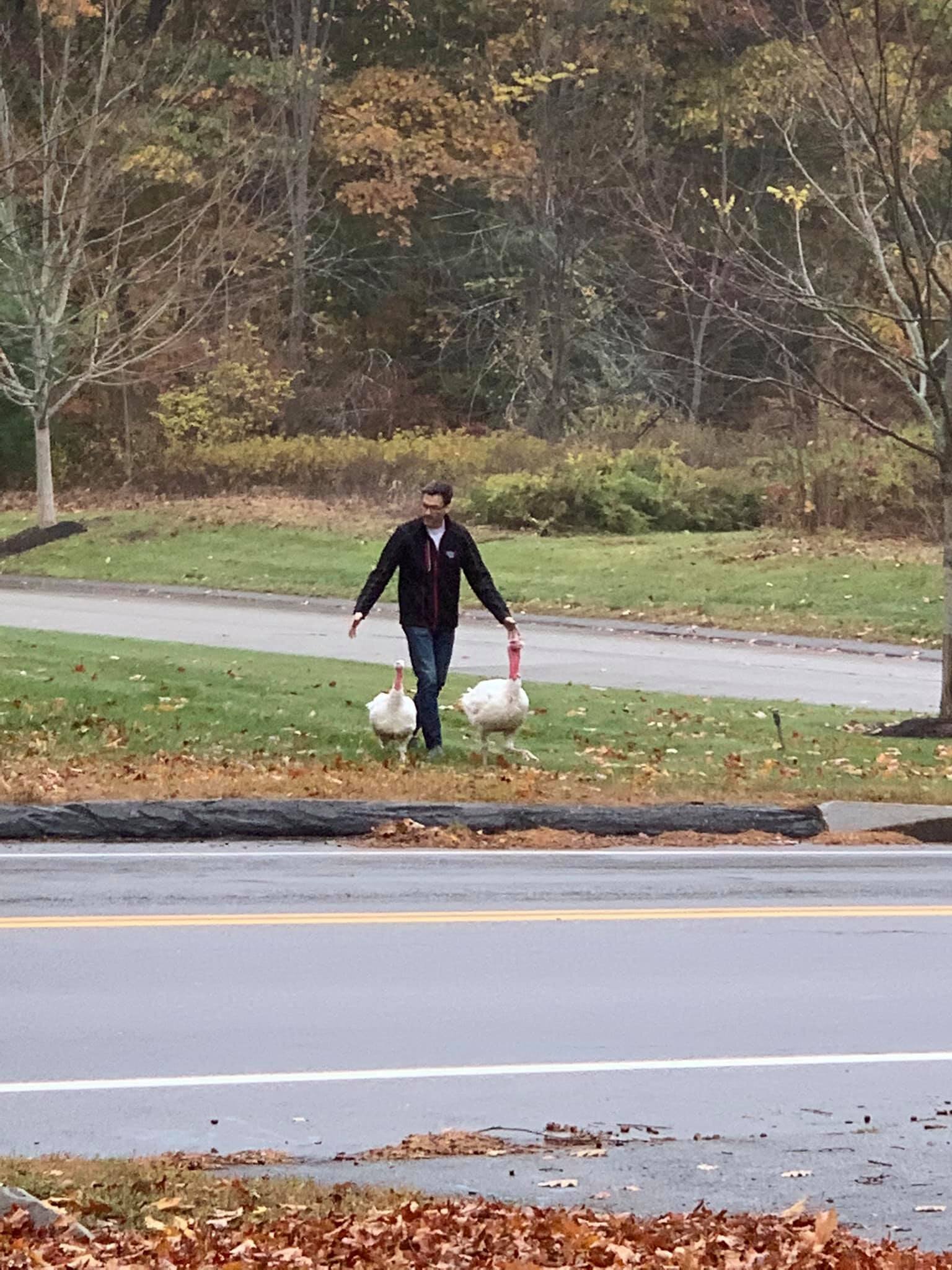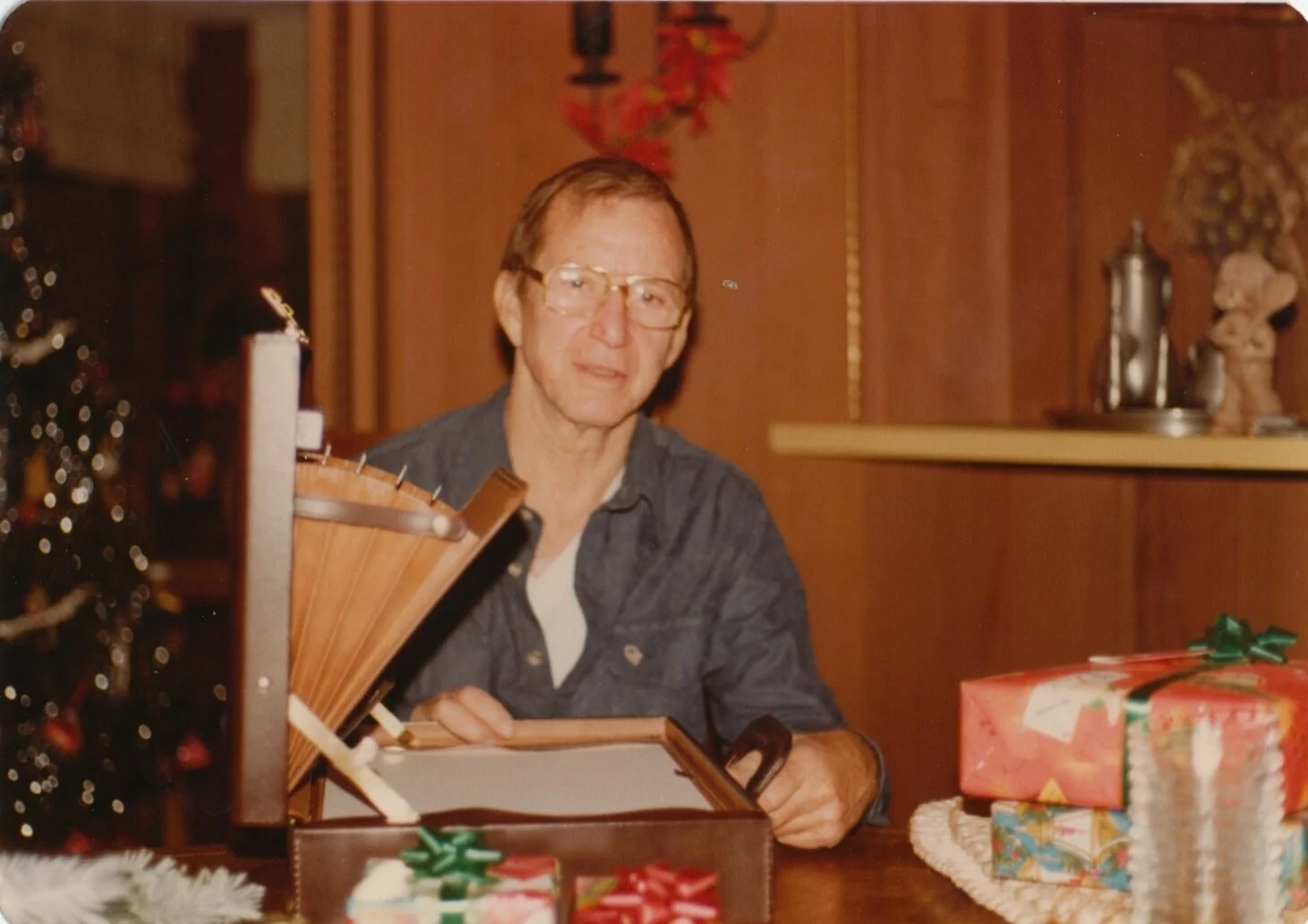Rendering lard
/Lard is good.
There. I said it.
There has been something of a resurgence of interest in lard. At least amongst the serious food writers and research. For so long, we were fascinated by all of the 'lard alternatives' made from vegetables of one sort or another: corn, peanut, palm, etc. - made liquid or solid by hydrogenation. And then suddenly, we figured out that - while scientifically interesting, vegetable shortening isn't really any better for you. Except for olive oil. Olive oil is better for you than vaccines, fish heads, or gamma rays. Or something.
But what about poor old lard? All those pigs and cows we kill off for our bacon burgers, and what happens to the white stuff that tidily wraps up all that lean meat we like to buy from the grocery store cooler cases?
Turns out, it's pretty good for you too, and back on the good list.
Anyway, I end up with lots of it from my pigs, and it is far too good a resource to chuck out or let go to waste.

There are three basic kinds of lard in your pig you should be familiar with:
1. Leaf lard (above). Also known as 'flare fat', it is the purest white fat that accumulates in long, lovely form around the kidneys and organs of a pig. This lard is not always available without speaking to your butcher, but is to be treasured. It's ideal for making pastry because of the crystalline structure of the fat molecules, and because of its clean and mild - almost non-existent taste.
Whether for a piecrust or a biscuit, this lard is the stuff you're after.
2. Caul fat - There's a netting of fat around the intestines that looks kind of like a basketball net or thick spiderweb. It's absolutely impossible to get ahold of in the US without calling in a few favors. It's extremely useful for wrapping up a lean roast (like venison). It turns a golden lovely when cooked, and imparts the needed moisture to the roast. Apparently. I've never actually scored one with my pigs, as it's a little fussy to separate from the organs, and most slaughterhouses don't bother. I've put it on my list for next year.
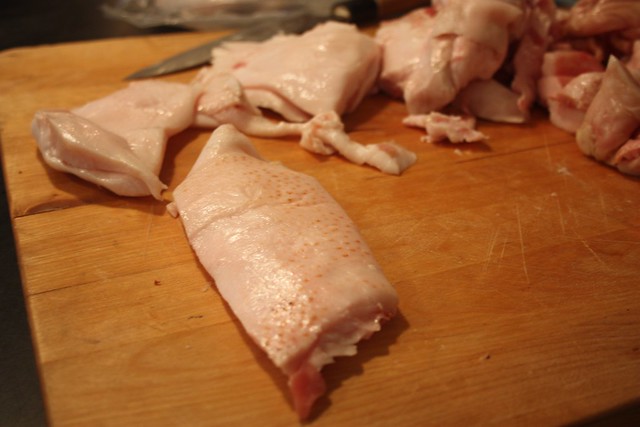 Several pounds of fatback
Several pounds of fatback
3. Everything else. Back fat. Belly fat. There's plenty of good fat on a pig, mostly in the layer between skin and meat. Many breeds build up 1-2 inches (or more), especially on their back above their shoulders and spine. This fat is gorgeous and pure, but has a slight pork taste (as opposed to the leaf lard), and a slightly more elastic structure. It's used for frying, making fatback and salt pork, and of course lardo - a kind of salami like cure made of the best of the fatback, sliced thin and served as an appetizer.
The render:
Rendering pork fat is both a necessary and simple process. The fat is generally attached to little bits of meat, skin or membrane that needs to be separated to leave you with the pure, clean white stuff you're looking for. Fortunately, it couldn't be easier.
Good lard has a relatively high smoke point - one of the reasons it is so much more useful than vegetable oil. So all you're really looking to do is to melt the lard off of the rest of the bits, and put it away neatly for future use.
I started with my leaf lard - although you can mix them all together, it's useful to keep them separate as leaf lard is more useful if pure for pastry making later. Leaf lard, when chilled, is so firm it feels crumbly. But it does come with a thin, papery membrane wrapped around it. And it's useful if you can pull that off first, as best you can.

It is not strictly necessary to get all this membrane off. Just do your best in whatever time you have available. You are going to have lots of unrenderable bits left over - the best of which are called crackling, which you can eat. This membrane is pretty useless, though. (At least, to me. I fried it up lightly and threw it to the dog, who enjoyed it and seemed happy to deal with my useless butchery bits, as usual).
I chop all of my fat - leaf or otherwise - roughly into manageable pieces. 1-2 inches or so. It's going into a large dutch oven, and I can both fit more in, and it will melt more evenly that way. The smaller the pieces, the faster it will render.
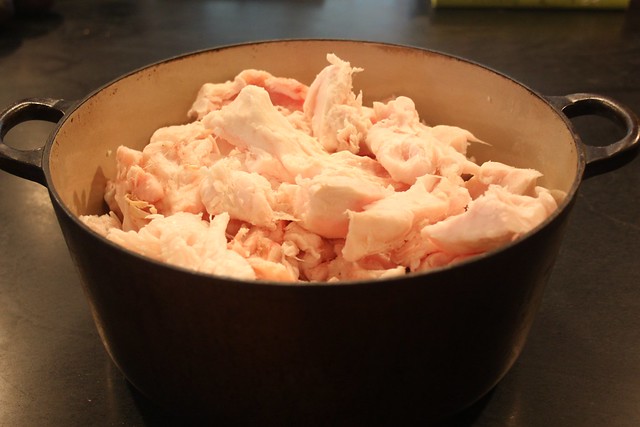
While you can render lard over a flame or on a burner, you have to watch it a lot more closely, stirring often and making sure you don't let it scald. And who has time for that?
The simplest way to render lard is to add about a quarter cup of water to the pot, and put it in an oven between 225-250 degrees fahrenheit. Check on it in a couple of hours, but expect it to take 4-6 hours (or longer) to render completely. You can even use a crock pot and leave it to go over night. However, I do find it useful to pour off the liquid lard into your catch container at least once, depending on the volume.
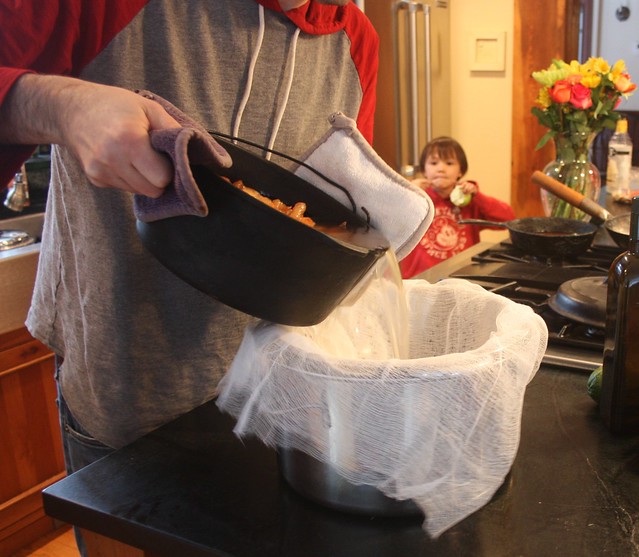
This is my other dutch oven - an old fashioned cast iron one that's as useful cooking a pot of beans over a fire as it is in the oven. Bonus: my pot is well-seasoned again after this process.
I line a colander with cheesecloth just to ensure I catch any little bits from collecting in the lard. Not that it would do much harm, but I want that pure, white end product.
Eventually, the bits in the pot will turn a golden brown. You're pretty much done then - having gotten about as much rendered lard as you're going to get.
Foods fried in lard fry very crisp and actually absorb less grease than from most vegetable oils. Because you can get the temperature nice and high (the smoke point is 400F, vs. peanut oils' 325F), the water flash-boils out of the food and prevents the absorption of fat back in, which is why it's important to have your oil nice and hot before you begin cooking with it.
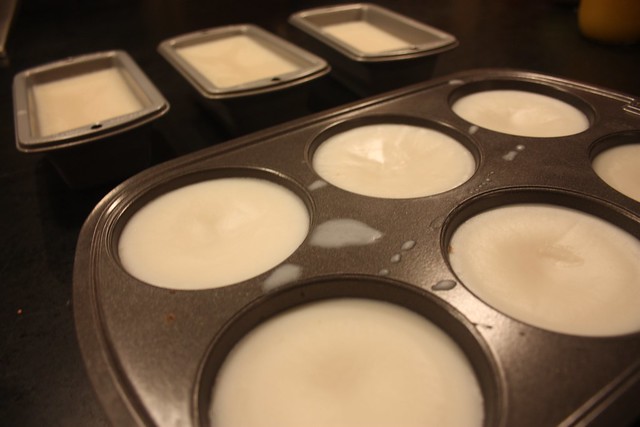
Good lard will last for a couple of months in your refrigerator, or a year or more in the freezer. I pour it into small loaf pans and these 'Texas-sized' muffin tins to set up. A half hour or so in the freezer, and they pop right out into a ziploc bag for easy storage and grab-and-cook convenience.
The remnants and crackling gets split between the dog, the chickens and a few choice bits saved back for us.
A note on the freezer storage - I always label everything clearly so I know when it went in, and where it came from. You've got to label your fat, as it's hard to tell them apart after a couple of months in the back of the freezer.
Is it as good for you as extra virgin olive oil, or fish oil, or the light sweet crude oil from the infertile offspring of a unicorn and a manatee? Ok, probably not. But it's better for you than your mother told you, simpler to work with, and will give you better and tastier results in your recipes. Which means you'll end up using and eating less than you would if you were using the bad stuff anyway.
So enjoy a bit of lard, guilt free. I give you permission.




